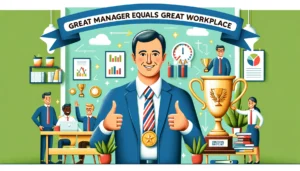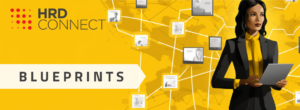How to Increase Employee Engagement by Doing What’s Right vs. What’s Easy
- 3 Min Read
Jill Christensen, Employee Engagement Expert, Best-Selling Author and HRD Thought Leader, examines why doing what is right, rather than what is easy, makes all the difference in creating real and effective employee engagement.
- Author: Jill Christensen
- Date published: Feb 14, 2020
- Categories

Engagement is the biggest challenge facing any people leader. While we know the root causes of high engagement in theory, achieving it remains as mysterious and distant a goal for many companies as it ever has.
Jill Christensen, Employee Engagement Expert, Best-Selling Author and HRD Thought Leader, examines why doing what is right, rather than what is easy, makes all the difference in creating real and effective employee engagement.
An American Airlines passenger was recently removed from a flight after he refused to take off a gas mask. Staff asked him to remove the mask when fellow passengers panicked, but he refused citing concerns about the coronavirus. Incidents happen in work environments all the time, but the incident is rarely the problem. How you handle it is.
In this instance, the mask-wearing passenger was taken off the plane and flew later in the day – not wearing a mask. Kudos to American Airlines’ staffers for immediately addressing the issue head-on, calming the hundreds of other nervous passengers. However, this is not how many organizations choose to manage issues.
In workplaces, problems tend to be swept under the rug because many employees do not have the confidence and courage to confront the perpetrator. Clearly, I’m not talking about a worker who enters your workplace in a gas mask, as that is probably a very unlikely scenario. But take for instance the employee who brings their dog to work when we know that some people fear dogs. Or the employee who can’t control their emotions and yells when they are angry.
Any action by an employee that causes another employee to feel fearful or uncomfortable is not OK. As an employer, you have a responsibility to provide a safe workplace, as this is essential for positive mental health and well-being, trust, productivity, and employee engagement. Therefore, you have a responsibility to hire – or train – people to speak up and do what’s right vs. what’s easy.
Jill, What can I do?
Begin the work to create a “Safe to say” environment, where people feel comfortable sharing negative news and can openly talk about what is not working (without fear of repercussions). How do you do this? Leaders must lead by example and speak up, offer training about how to have difficult conversations, and reward honest dialogue. In addition, consider modifying your Values to add ‘Safe to Say’ or ‘Open and Honest Dialogue,’ as this will ensure that employees are held to this important standard. You can do this!








